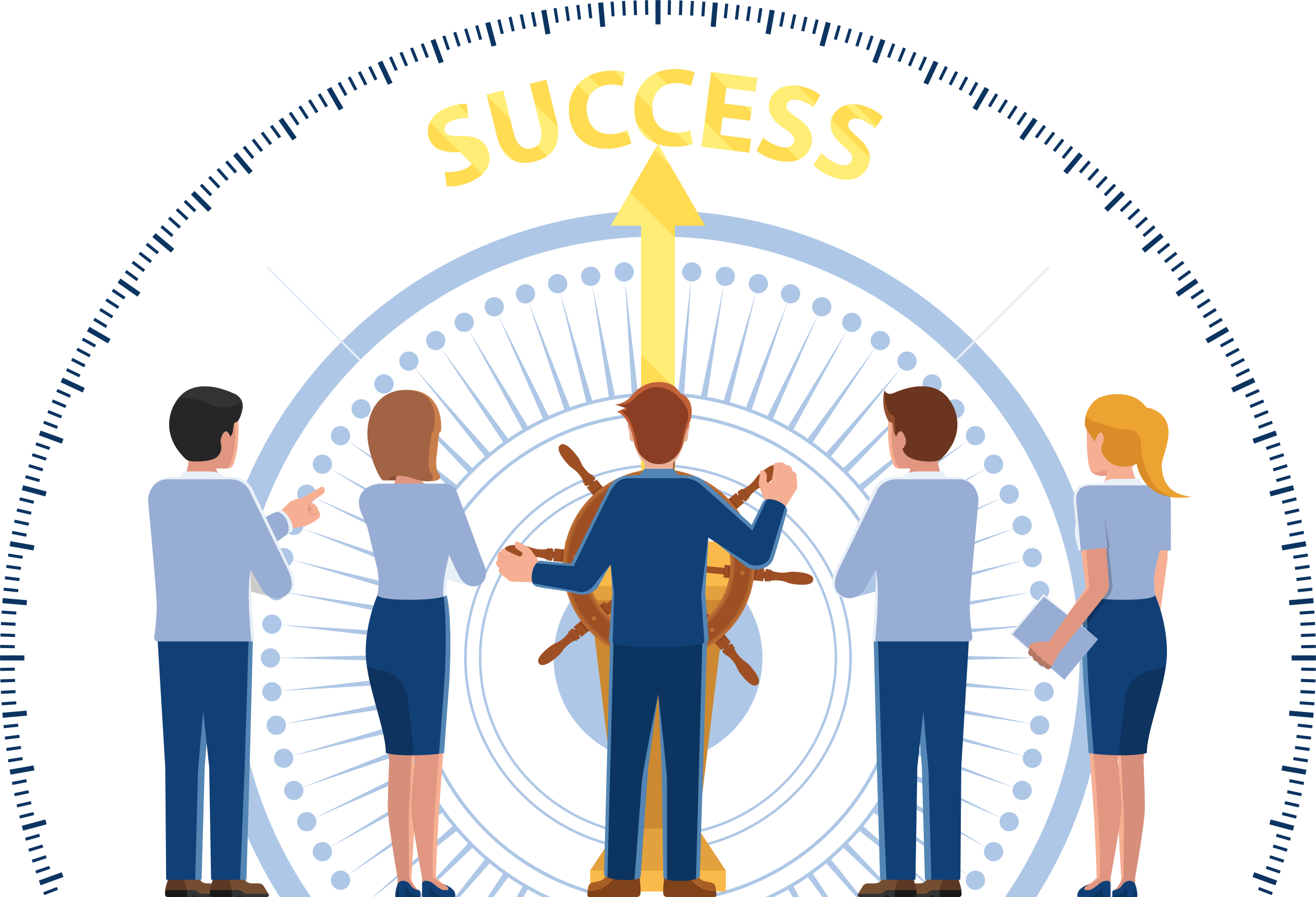Take Me to your Leader
Analysing leadership skills and qualities
Whatever your industry or sector, the number of competitors in your marketplace, each with their own value proposition and each with their own approach towards the customer relationships model, is likely to have grown over the last few years.
Although this is undoubtedly a threat to your profitability, margins, and possibly even your existence, it is definitely a positive from the customer’s point of view. Accompanying this increase in options are higher expectations from the vendor. This is not confined to the quality and functionality of the product but also how they will collaborate with the vendor and the type and range of support the vendor offers its clients post-sale.
The customers’ post-sale value requirement has driven the relationship between vendor and customer from the more traditional reactive account manager approach to the more proactive customer success manager one. However, for Customer Success Managers and their teams to maintain successful relationships, there are two fundamental drivers:
- Flexibility and adaptability – the ability to react to changing market conditions and customer needs.
- Anticipating new trends – studying customer habits, demographics, and competitor developments.
For the CSM model to remain relevant, the interaction approach must continue to update and anticipate. Ice hockey legend Wayne Gretzky summed it up best. When a reporter asked what made him a great player, he replied, “I just skate to where the puck is going be.”
Leadership, not Management
Author Steven Covey wrote in 7 Habits of Highly Effective People that:
“Management is efficiency in climbing the ladder of success; leadership determines whether the ladder is leaning against the right wall.”
Although the Customer Success Leader role is similar to the traditional management functions of the past, the CS Leader must adopt a value-added approach as the business environment changes. Rather than focusing on optimising the usage of your product or solution, the CS leader must acknowledge emerging industry trends and best practices, explore new concepts, raise new ideas, and challenge the status quo. It means looking past the management roles of daily tasks and timelines; instead, the modern CS leader will aspire to drive business outcomes supported by key metrics. Of course, these metrics may change across organisations, for example, revenue, efficiencies, or reducing staff costs. Still, regardless of what you are measuring, it is a critical requirement that they are identified early and aligned across all stakeholders.
A Science, not an Art?
“Leaders are born, not made” – well, we have all heard that at some time, and I am sure it is true occasionally. In the UK during the second world war, Winston Churchill seemed to know how to rally and inspire people almost instinctively.
But the rest of us must rely on a combination of science and art to develop leadership skills. Inevitably, you will encounter resistance and conflicting views and opinions in your leadership role. Your instinct may be to barrel ahead, relishing the fight to eventual success. In the short term, this may be a viable tactic – but looked at from a different perspective, what signal is this sending out? Perhaps a single-minded and driven individual ready to fight through to the end. Or someone not prepared to listen will take opposition personally and remember the slights ‘for the next time.’
Which version do you think is the better image?
Gandhi became the catalyst for change in India, primarily through non-violent resistance. He repeatedly returned to the negotiating table no matter what the state did. Eventually, he became seen as the ‘adult in the room’, earning respect for his willingness to look for common ground and find shared goals all stakeholders could work towards. Although unaware of it, he would have also benefited from a psychological phenomenon known as the confidence heuristic. Validated by research, this is a type of mental shortcut that nudges individuals toward confident people and makes them more likely to rely on their knowledge and competency.
Look at the Bigger Picture
When you look at the broader situation, you are avoiding a form of cognitive bias known as loss aversion.
Loss aversion is a tendency to prefer avoiding losses rather than acquiring equivalent gains. Research has suggested that, from a psychological perspective, a loss is twice as potent as a gain. This can lead to a promising idea being rejected because it involves you losing something you value. As a CS leader, enabling effective change requires holistic and dispassionate thinking, assessing information and data from various sources, and inviting supporters and critics of a proposal to present their arguments. And remember to set a deadline for decisions – this will avoid the paralysis by analysis trap.
Remember who your competitors are.
Hyper competitive may be celebrated in sports, but it is increasingly seen as toxic in business. Larry Fink, CEO of asset manager BlackRock, has primarily led this change in thinking. He put forward the premise that an obsession with increasing shareholder value at the expense of workers and consumers was short-sighted and a lose-lose proposition. For him, a business can only flourish when employees and customers thrive.
So as a leader, it is essential to remember who your competitors are and, more importantly, who they’re not. Avoid office politics, especially when gathering support for a pet project; instead, offer well-argued propositions that stop short of criticising others (and if they show you in a good light, so much the better). Your competitors are out there in the marketplace, not in the C-suite.
And if you lose the argument from time to time, remember, as long as your business wins, so do you.
A wall takes more than one brick.
The more significant the change, the bigger the need for a coalition. Recruiting people to your cause whose interests align with your own, and consulting them at an early stage, make success more likely. In the end, it is a numbers game, and people are more likely to champion an idea they have helped develop. If your coalition contains people from diverse groups within your organisation, this adds to its strength and may inspire others to join your cause. In the initial stages of any project, take time to try and secure buy-in from stakeholders; the broader your base, the harder it will be to undermine you.
What’s the bravest thing you’ve ever said?”
What’s the bravest thing you’ve ever said?” asked the boy. “Help”, said the horse.”
(Charlie Mackesy, The Boy, the Mole, the Fox and the Horse)
It takes courage to be open about what you know and to admit what you’re working to find out, and it takes nerve to ask for advice. It also takes courage (but a different type) to take decisions based on incomplete data… You demonstrate humility and perhaps vulnerability by admitting that you don’t have all the answers from the get-go. Remember, part of your remit as a leader is to help those who report to you succeed. By asking for help, you are fostering psychological safety among your colleagues, the belief that they won’t be punished or humiliated for speaking up with ideas, questions, concerns, or mistakes. In turn, this encourages engagement and creates an environment where people are prepared to admit mistakes at an early stage when they are easiest to repair.
So, what type of leader are you?







